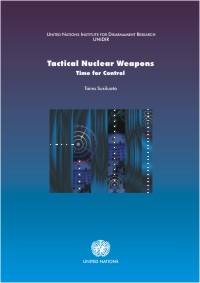Tactical nuclear weapons (TNWs) are the most dangerous and least regulated category of nuclear weapons left over from the Cold War.
The Russian Federation and the United States still hold thousands of them (exact figures are unknown) scattered across a host of locations. The latter, combined with their portability, make TNWs more vulnerable to theft and more susceptible to falling into the wrong hands than their strategic counterparts, and hence particularly dangerous.
Moreover, unlike strategic nuclear weapons that are controlled by a number of legally binding treaties, TNWs are governed solely by an informal regime comprising unilateral pledges to partially eliminate them and restrict their mode of deployment exchanged by the Presidents of the Soviet Union/Russia and the United States some ten years ago. Ingenious at the time, this formulation now looks increasingly lacking. Implementation ambiguities resulting from its unilateral basis and lack of accompanying transparency measures that would provide confidence that commitments have been fulfilled plus a growing interest in potential military uses of TNWs in both the Russian Federation and the United States are clouding the future of the regime.
Tactical Nuclear Weapons: Time for Control brings together some of the foremost international experts on TNWs to examine the state of the TNWs regime ten years on and explore practical options for strengthening and revamping it to more adequately address current and future arms control needs. In particular the study recommends that the Russian Federation and the United States re-affirm their 1991/2 declarations regarding TNWs and work out suitable complementary monitoring and transparency measures, as well as pledge not to develop any new TNWs or to resume testing and not to use or threaten to use TNWs.
Citation: Taina Susiluoto (ed.) (2002). "Tactical Nuclear Weapons: Time for Control", UNIDIR, Geneva.
